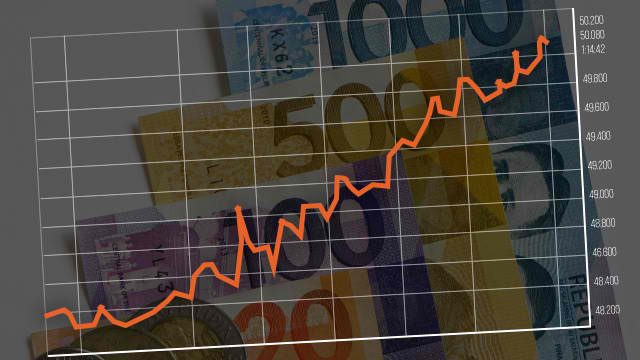SUMMARY
This is AI generated summarization, which may have errors. For context, always refer to the full article.

MANILA, Philippines – The peso flirted with the P50 to $1 level again and closed at its weakest in over a decade amid the “hawkish” stance adopted by the US Federal Reserve after it jacked up interest rates last week. (READ: Philippine peso hits P50 to the dollar)
The local currency momentarily touched the 50 to $1 level on Tuesday afternoon, December 20. It opened weaker at P49.99 before strengthening to an intraday high of P49.94. It lost steam minutes before the end of the trading day to hit an intraday low of P50 to $1.
In the end, it closed at P49.999 to $1 from Monday’s 49.96 to $1. (READ: How a Fed rate hike impacts the Philippine economy)
This was its weakest level in over a decade, or since closing at P50.12 to $1 on November 16, 2006.
“These are episodic movements of the peso. Remember that any movement of the peso should concern us. We always monitor the movement of the peso,” Bangko Sentral ng Pilipinas (BSP) Deputy Governor Diwa Guinigundo said.
He pointed out external developments continue to affect the movement of regional currencies including the peso against the US dollar.
“The concern that we continue to see in [the] external market, the same challenges that we emphasized in the previous press conferences,” he said.
Last week, the US raised interest rates by 25 basis points to between 0.50% and 0.75% after the two-day meeting of the Federal Open Market Committee (FOMC).
This was its second rate increase in a decade after the 25-basis-point rate hike in December last year.
Feeling the Fed hike
The US Fed seems hawkish over the hike in interest rates in the near future, as it penned 3 quarter-point increases next year instead of two as of September.
The series of rate increases would be followed by 3 more rate increases in 2018 and 2019.
“What will come after the second increase in the US Fed fund rate,” Guinigundo added.
Apart from the rate increase, he explained, investors are concerned about the impact of US President-elect Donald Trump’s policies on the Philippines.
“What really, with the translation of so many pronouncements of [the] US President-elect in terms of real policy on trade, on business, particularly on business process outsourcing; immigration. All of these 3 are very important from our perspective, particularly on external payments position,” he said.
Guinigundo also cited Britain’s decision to leave the European Union (EU) last June 23.
“Again, the external markets continue to see these challenges. Because of increased interest rate in the US, funds are going back to the US under the safe haven principle. We continue to see the same factors that drive negative market sentiment,” the BSP official added.
He explained there is higher demand for the greenback due to more inflows, increased importation of capital goods, as well as the positioning undertaken by both the government and the private sector to service their foreign obligations.
“The implications on inflation are something that we also monitor but we are less concerned because the exchange rate pass through, from exchange rate movement to inflation, has gone down in recent years,” Guinigundo said. – Rappler.com
Add a comment
How does this make you feel?
There are no comments yet. Add your comment to start the conversation.